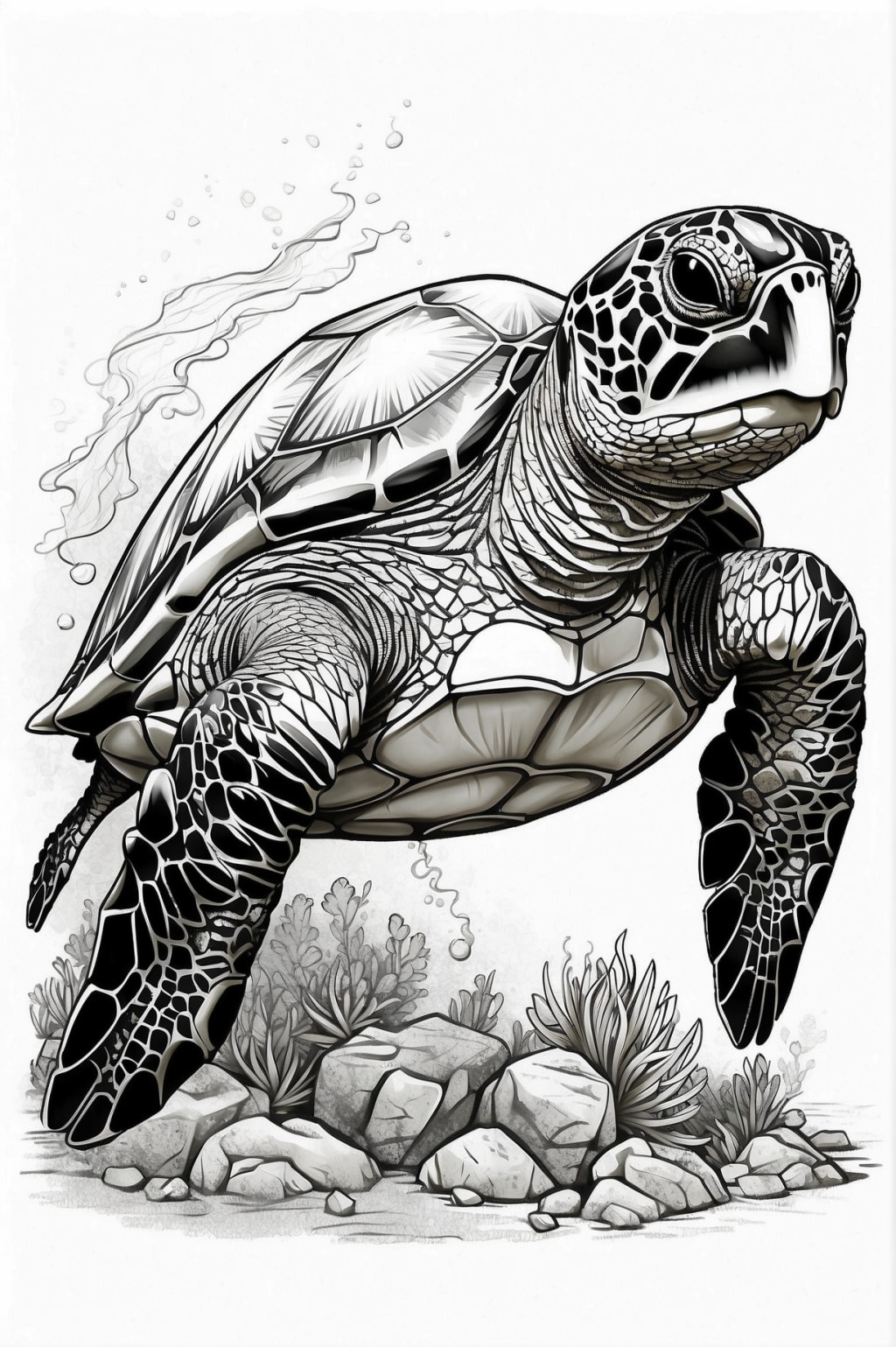Turtles
Examining the Shell: An Underground Adventure into the Mysterious World of Turtles

A group of turtles coexisted peacefully in a meadow surrounded by tall trees. Under the guidance of their sage elder, Grandshell, these turtles relished the basic pleasures of their tranquil lifestyle. Grandshell gathered the turtles to tell them a story about their ancestors one day as the sun was sinking below the horizon, splattering orange and pink hues over the sky.Their ancestors confronted a difficult task centuries ago: a dangerous river that divided them from a verdant paradise on the other side. Unfazed, the turtles came up with a strategy. Each turtle made a contribution to the journey's success as they joined forces and demonstrated resolve to construct a slow but steady chain.The young turtles listened carefully to Grandshell's telling of the tale, motivated by the fortitude of their forebears.
There are many different kinds of turtles, and each has evolved to live in a particular habitat. Typical varieties include some of the following:Marine Turtles: Sea turtles include species like the Loggerhead, Green, and Leatherback turtles, which are distinguished by their size and affinity for marine environments.Turtles in freshwater: Examples of freshwater turtles are the Painted Turtle, Map Turtle, and Red-eared Slider, which can be found in ponds, lakes, and rivers.Turtles in boxes: Box turtles, which include species like the Eastern Box Turtle, are terrestrial reptiles distinguished by their fully closed, hinged shells.Turtles that snap: Snapping turtles are characterised by their strong jaws and combative nature, and they are frequently found in watery environments.Softshell Turtles: Known for their flexible shells, these aquatic creatures, which include species like the Florida Softshell Turtle, are suited for a completely aquatic lifestyle.Musk Turtles: Also referred as as
Turtles have a variety of lives depending on their species and environment. They lead the following general lifestyles:Turtles live in a variety of habitats, such as rivers, lakes, ponds, marshes, and terrestrial areas. Certain species have adapted to fit into particular habitats.Depending on the species, turtles can have an omnivorous, herbivorous, or carnivorous diet. For instance, while carnivorous turtles eat insects, tiny fish, or even carrion, herbivorous turtles eat largely flora.Behaviour: Turtles are renowned for moving steadily and slowly. Many animals use the sun's heat to control their body temperature. Certain turtles migrate over great distances, such as sea turtles.Reproduction: Turtles lay eggs to procreate. Females frequently go back to the same breeding locations. The duration of incubation varies, and hatchlings are usually left on their own from the moment of birth.Adaptations: The adaptations of turtles are distinct. As an illustration, sea 🐢
Turtle lifespans differ greatly between species. They live longer due to a variety of reasons, like as size, habitat, and environmental influences. The following are broad approximations for various species of turtles:Sea Turtles: The lifespans of sea turtles are often very long. Certain species—such as the Loggerhead, whose estimated lifespan ranges from 50 to 70 years or more—can survive for several decades.Tortoises: They are renowned for living incredibly long lives. Giant tortoises can live for far over 100 years; some, like the Galápagos and Aldabra tortoises, can live for 150 years or longer.Box Turtles: In general, box turtles live between 30 and 40 years, while under ideal circumstances, some individuals may live longer.Painted Turtles: A popular freshwater species, painted turtles can live for 20 to 30 years, depending on
Sea turtles, particularly the leatherback sea turtle (Dermochelys coriacea), are usually the largest turtles in the world. Leatherbacks are renowned for their enormous size and distinctive features.Sea Turtle with a leatherback shell:Size: Adult leatherback sea turtles can weigh up to 2,000 pounds (900 kilogrammes) and reach lengths of up to 10 feet (3 metres).Shell: Instead of having a hard, bony shell like other sea turtles, leatherbacks have a characteristic leathery one.Diet: Their main food source is jellyfish, which they can devour because to their specially designed jaws.Oceans all over the world are home to leatherbacks, which are renowned for their amazing size and deep-sea diving capabilities. They are renowned for their exceptional swimming abilities despite their small.
About the Creator
Enjoyed the story? Support the Creator.
Subscribe for free to receive all their stories in your feed. You could also pledge your support or give them a one-off tip, letting them know you appreciate their work.





Comments
There are no comments for this story
Be the first to respond and start the conversation.